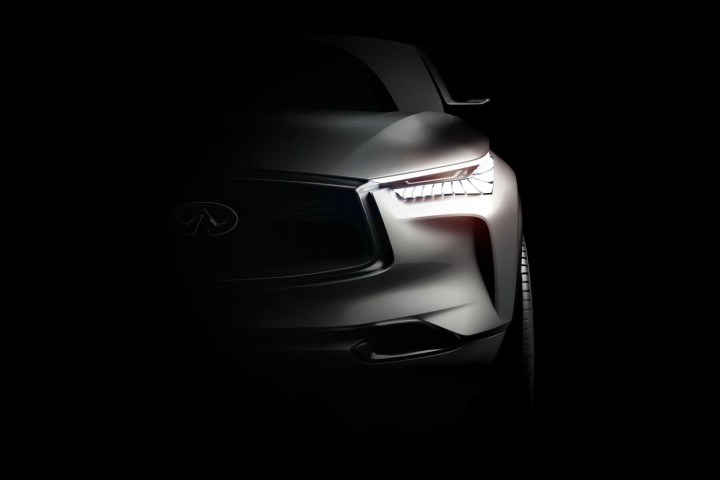
The QX Sport Inspiration takes the form of a crossover whose front end clearly falls in line with Infiniti’s latest design language. The teaser image reveals that the soft-roader gets a bolder version of the grille found on the recently introduced Q60 coupe accented by a large Infiniti emblem, sharp LED headlights made up of several rectangular blocks, and vertical air ducts that presumably direct cooling air to the brakes. Cameras mounted on what looks like extensions of the A-pillars replace the conventional mirrors.
With the notable exceptions of the Q80 Inspiration that was shown at the Paris Auto Show a year and a half ago and the Q50 Eau Rouge, a majority of Infiniti’s recent concepts have been previews of upcoming production vehicles. Infiniti is keeping its lips sealed, but it’s reasonable to assume that the QX Sport Inspiration will give us an early look at the next generation of the QX70. The current model was launched in 2008 as the FX, so it’s due for a replacement in the next year or so.
Stay tuned, Infiniti’s next concept will be introduced online in the next few days, and DT Cars will be in Beijing to bring you live images of it starting on April 25. The concept will be toned down and transformed into the next-generation QX. Look for the crossover to make its debut at a major auto show early next year, and to go on sale across the nation in time for the 2018 model year.
Editors' Recommendations
- Volkswagen’s electric ID.Life concept car doubles as a gaming console
- New York International Auto Show canceled for 2020
- Car shows were already endangered. Coronavirus might make them extinct
- Polestar’s Precept concept is an electric fastback with a recycled interior
- 2019 LA Auto Show: Highlights, headlines, and everything awesome




